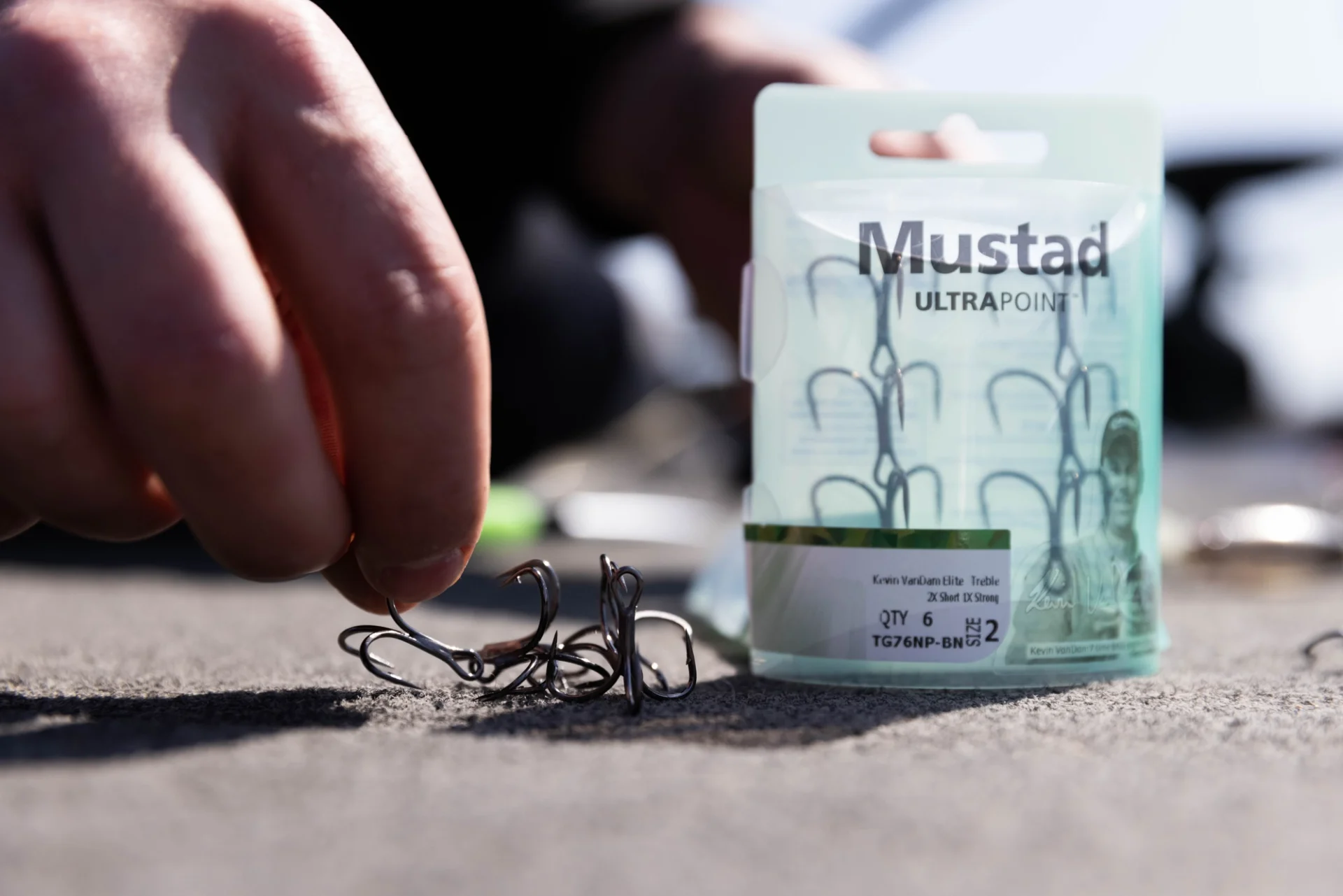Topwaters for Fall/Early Winter Bass

Topwater season isn't over!
While the end of one year and the beginning of another typically finds anglers moving more toward targeted presentations and finesse baits, don’t put away those topwater baits too soon. The fact is, with the exception of brutal post-frontal conditions, windows of topwater opportunity exist in varying degree year round.
This is particularly relevant when a warm year finds higher temperatures lingering well into fall and delaying winter’s harshness. Bass are opportunistic predators, so regardless of what the calendar says, they’ll continue their fall feed as long as comfortable temperatures allow.
For proper foundation, let’s note the importance of equipping your topwater with the right hardware. Topwater fishing is, no doubt, one of the most exciting ways to catch bass; however, it’s not always the most efficient, as fish often miss. Maybe they attacked with such aggression that their approaching wake pushed the bait past their jaws. Or, it could be a lackadaisical strike where the fish simply bumped the bait.
In any case, you’ll want to maximize your every opportunity — even the ones where the fish is marginally committed. Angler response certainly matters, but the game starts at the point of contact and that means your hooks.
Specifically, the right choice for topwaters is the Mustad KVD Elite Round Bend Treble. This model features a Opti-Angle Needle Point that penetrates quickly and securely holds whatever it hooks.
Changing treble hooks is simple, as long as you follow a proven technique that streamlines the operation. Use your Mustad Split Ring Pliers to grip one of the bait’s split rings at the opening and with your free hand, use the existing treble hook to force open the overlapped section.
Next, slide the replacement hook on the open ring, hold it firmly and use the pliers to spin the ring. Essentially, this rotates the old hook off, while moving the new one onto the split ring.
A few points to consider with late-season topwaters:
Easy Pickings: If the fish push bait topside, the frantic feeding often leaves wounded baitfish struggling at the surface. Other times, small pods of baitfish become cut off and wander until they find their way back. In either case, a walking topwater does a great job of mimicking vulnerable prey.
Even in the absence of schooling, walking a topwater across a flat adjacent to a channelswing, or parallel to a dock with brush piles, or next to a laydown or an old fence row can tempt one of those day-making strikes.
Quality Bites: While we occasionally see the overly optimistic juvenile bass blast a topwater nearly its size, these hefty baits tend to weed out the smaller fish by appealing to the larger, dominant bass that prefer one or two big mouthfuls over chasing lots of smaller baitfish.
Low Light Delight: Daybreak blow ups often reward a diligent topwater effort, as big bass patrol areas they’ll typically abandon once the sunlight intensifies. Of course, meteorological details often keep the party rocking, as the dreary, overcast skies of a mild winter day often extend a topwater bite.
If you put in a full day and find yourself fortunate enough to watch the sunset, don’t forget to hit your best spots with a topwater before heading to the ramp. Dwindling daylight does wondrous things to a bass and not many will pass up the chance for an easy bedtime snack.



